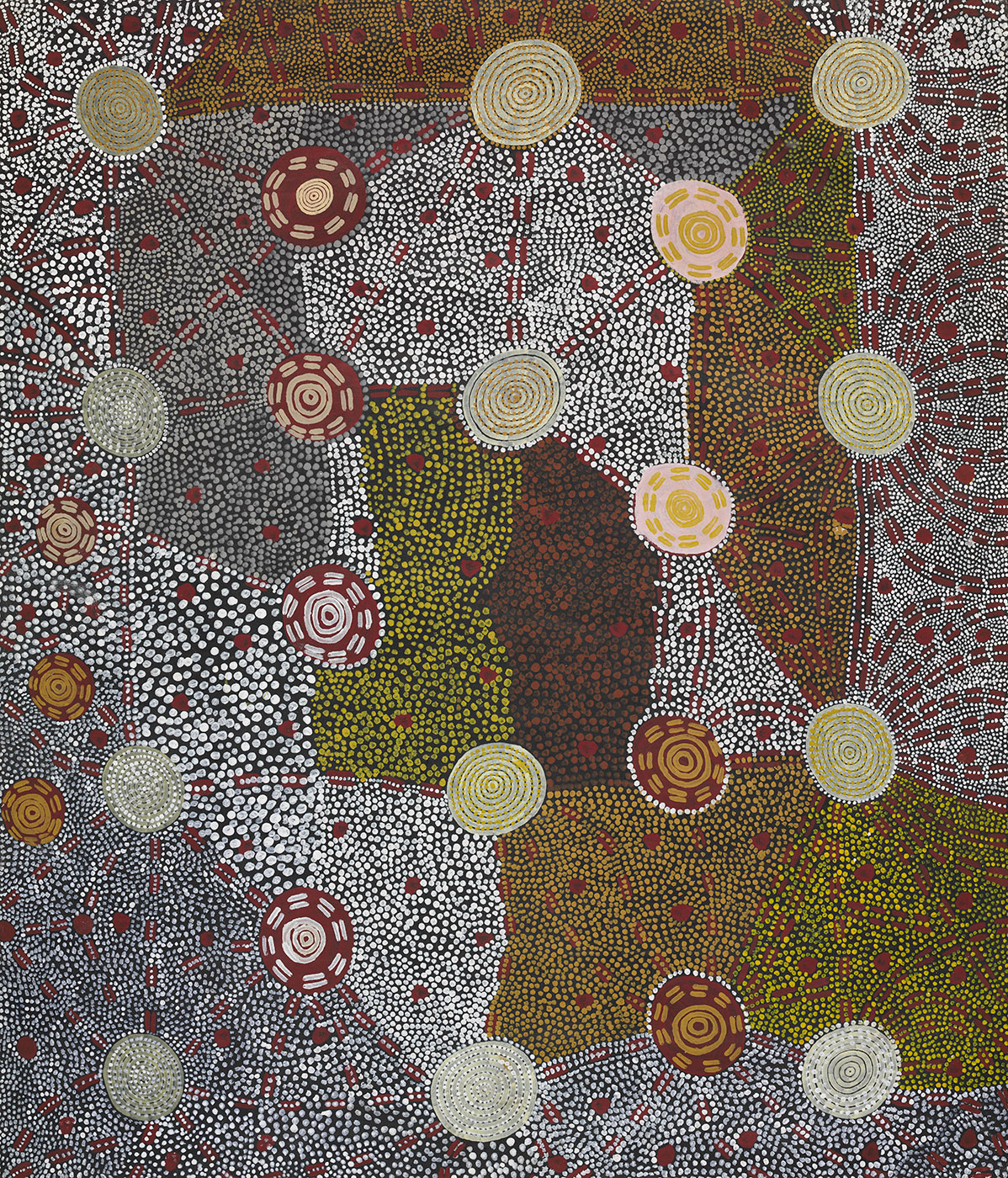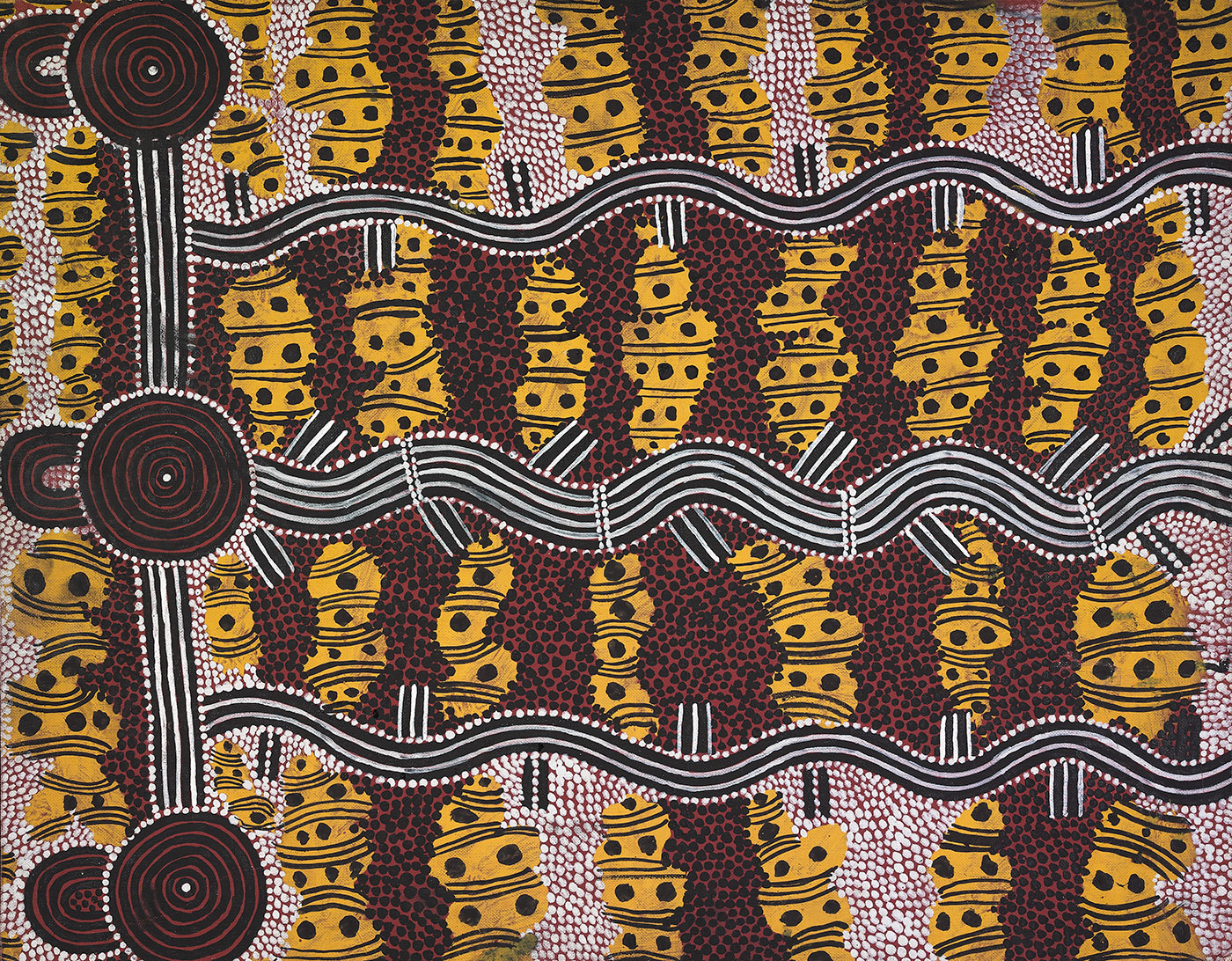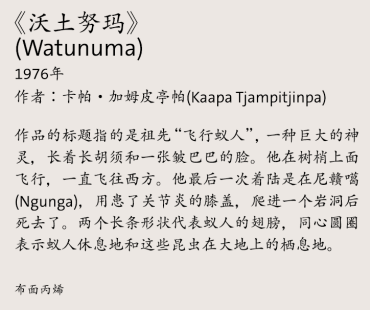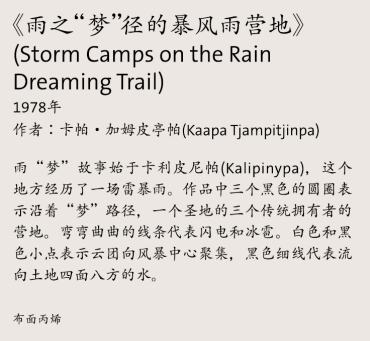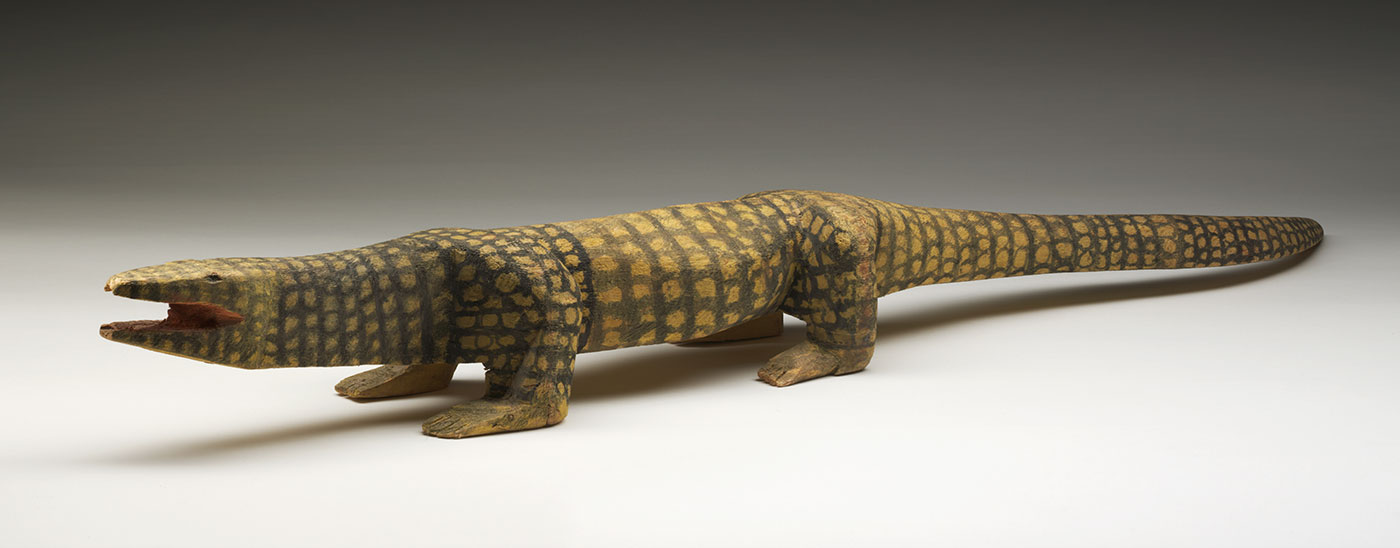Anmatyerr, Warlpiri and Arrernte people
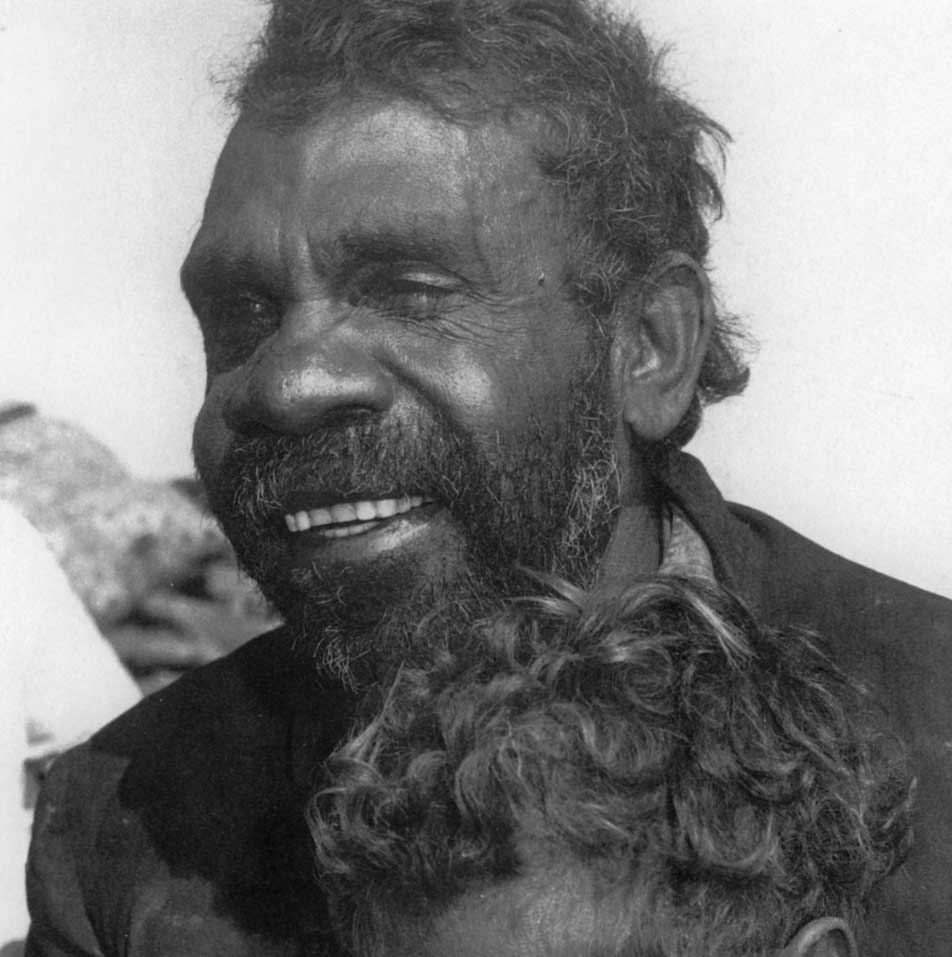
about 1926–89
Kaapa grew up on a cattle station, where he worked as a stockman before moving to Papunya in the early 1960s. A forceful and highly intelligent man, he was a key figure in establishing the painting movement, acting as principal artist of the Papunya School mural and becoming Papunya Tula Artists’ first chairman. His work won first prize in the 1971 Alice Springs Caltex Art Award, the earliest public recognition of a Papunya painting.
Watunuma, 1976The title of this painting refers to the ancestral Flying Ant Man, an immense being with a long beard and wizened face. He flew just above the treetops, travelling westward. At Ngunga he landed for the last time, crawled on his arthritic knees into a cave and died. The double bars represent ant wings, and the concentric circles refer to the ant’s resting places and the earthen ‘homes’ of these insects. |
|
Storm Camps on the Rain Dreaming Trail, 1978The Rain Dreaming story starts at Kalipinypa , the site of a massive thunderstorm. The 3 dark circles in the painting are the camps of the 3 traditional owners of a sacred site along the Dreaming trail. Lightning and slashing hail are represented by the sinuous lines. The fine white and black dots are cloud masses rolling into the blackness of the storm centre, and the fine black lines represent the water that flowed over the entire country. |
|
Goanna, about 1972
Before the painting movement began in Papunya during the early 1970s, artists such as Kaapa had established reputations as carvers of realistic snakes and lizards. This intricately carved lizard shows the artist’s extraordinary woodworking skills. His early paintings often included realistic depictions of lizards.
